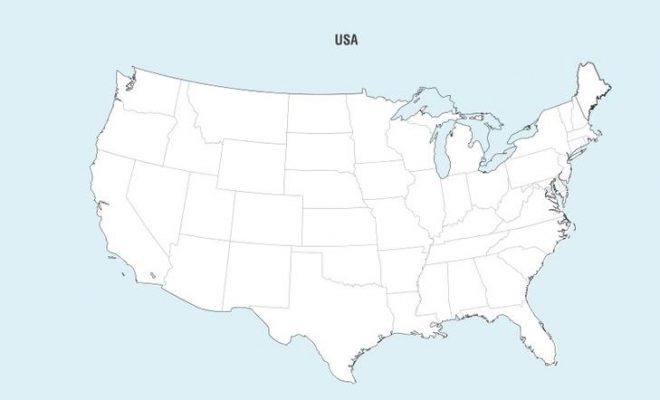The Best and Worst States to Retire in

Retirement is a golden period. You no longer have to wake up early and go to work. You do not have to sweat it out and meet deadlines. The kids are settled and can take care of themselves. You really are on your own, living your life in a blissful, slow, and steady fashion. If you are nearing the age of retirement or have started planning your retirement recently, you must have pondered about where to settle. There is a pool of options ahead of you! You could be living by the beach, or be surrounded by green grass and snowy mountain caps. While you may consider reasons like the weather, the proximity to your children and friends, etc., you must also consider factors like affordability, safety and healthcare opportunities.
While you are busy saving up and calculating the value of your retirement planning goals, we are here to help you choose the right state for you. Here is a list of the best and worst states to retire in. Have a look!
Table of Contents
The Best states for Retirement
1. Nebraska
Yes, you read that right! Nebraska has been ranked as the best state to retire in by Bankrate. Though Nebraska doesn’t win the weather battle by many points, it does rate high on affordability, healthcare, and the cost of living. Nebraska has beautiful green walking and biking routes that are perfect for retirees. The state offers a calm and slow life. Coming to the cost of houses, Zillow reported that the average cost of a house in Lincoln is around $175,500 and in Omaha, it is around $167,500. The state rates are very high in healthcare leaving behind two-thirds of all other states. The state also has a low crime rate.
2. Nevada
Nevada has been a part of many people’s retirement planning, thanks to its warm climate. The state is ideal for retirees for its no tax policies. Nevada doesn’t charge taxes on income or social security benefits. Pension income (public as well as private) and retirement account withdrawals are also tax-free. Getting rid of taxes leaves you with good savings at hand. Though the cost of living is a bit high and an average home can cost you $260,000, the state makes up for it with its lively atmosphere. Retirees have golf courses, fancy hotels, etc. at their disposal. If Nevada is a part of your retirement planning, look for a house in Gardnerville. The city offers great healthcare and medical accessibility and almost a quarter of its population constitute of retirees.
3. Massachusetts
Massachusetts does charge taxes on other retirement income, but social security benefits are exempted from taxes. Your public pension income is also tax- free. Massachusetts also offers the lowest estate tax exemption in the U.S at $1 million. The average value of having a home in the state is $341,000. The state also offers great healthcare facilities with nationally ranked hospitals. The rich history and culture are added perks. If your retirement planning revolves around snowy winters, then Massachusetts is a good option. You can consider living in Methuen for lower house costs that are estimated to be $200,000.
4. North Carolina
The state of North Carolina makes it to most retirement planning lists anyhow. Its beautiful beaches and mountains give retirees the best of both worlds. The climate is not harsh and stays ideal all year round. The property taxes are low and the cost of living is 5% below the national average. Social security benefits are not taxable and the state is one of the most preferred retirement states in the U.S.
The Worst states for Retirement
1. Alaska
While the state offers great appeal to those who give high importance to taxes in their retirement planning, Alaska is still one of the worst states to live in because of its extreme climate and increasing crime rate. The state’s crime rate has grown by 34% in recent years, most of which have been property crimes. Because of the geographical issues, the cost of living is also higher as compared to other states. The only appeal to this state is its no income tax policy.
2. Oregon
Oregon does offer a beautiful coastline and the appeal of warm beaches, but the cost of living can eat into all your retirement savings. Oregon’s cost of living is 18% higher than the national average. A house in Portland can cost you $389,000, as per the National Association of Realtors. Healthcare is also expensive and the quality of healthcare, as reported by Bankrate, is the ninth-worst in the country.
3. Vermont
A dream for ski lovers, Vermont has little to offer to retirees. The state taxes you on everything, right from your social security benefits to your other retirement income. Any income more than $ 45,000 is taxable for single filers and an income more than $ 60,000 is taxable for couples. Though the healthcare system is great, the state falls behind in affordability. Living costs are higher than the U.S average by a whopping 12%.
4. New Jersey
Being the garden state, New Jersey sure has a beautiful landscape to offer retirees, but making it a part of your retirement planning is not as great as it may seem. The state has the highest property taxes in the U.S. The gasoline taxes are also quite high. New Jersey charges a 6.6% sales tax. The healthcare costs are soaring, and the living costs are amongst the five highest in the country. The weather can be harsh. Also, the overflowing traffic does not make it the best place to settle in your old age.
To sum it up
Retirement planning is an intricate activity. Many people spend most of their lives saving up for retirement but don’t research on the place they want to settle in. Local tax rules, healthcare costs, cost of living, etc. can adversely impact your entire life’s savings. On the other hand, a state’s culture, climate, and proximity to your loved ones also affect your happiness quotient and overall health.
















